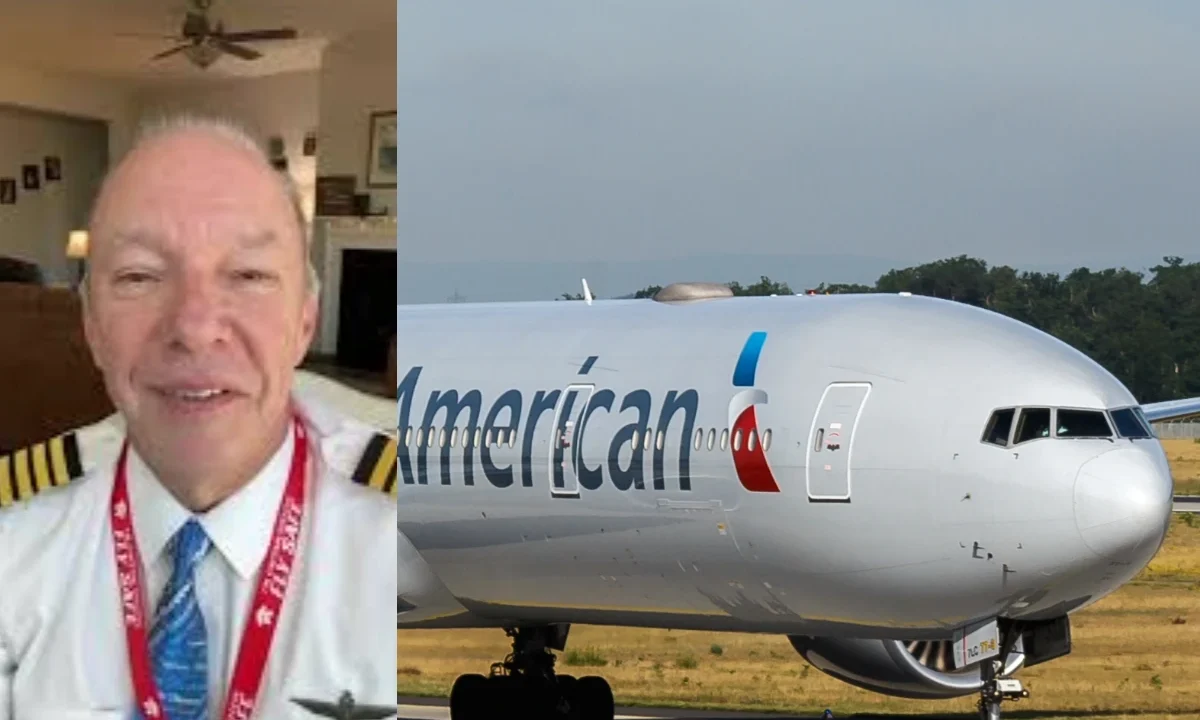- Home
- Global News
- American Airlines Pilot Reprim ...

American Airlines Boeing 777 Pilot Sent to Holding Area After Taxiing Speed Dispute with Delhi ATC
New Delhi: A routine departure turned tense at Indira Gandhi International Airport (DEL) when a Boeing 777 pilot from American Airlines was reprimanded by Delhi Air Traffic Control (ATC) for taxiing at a speed below the airport’s prescribed minimum.
The pilot, Captain Steeeve, a popular YouTuber and senior aviator, reported that he was taxiing at 12 knots—a speed he deemed safe due to the aircraft’s maximum gross weight. However, Delhi ATC insisted on a minimum of 15 knots on straight taxiways, eventually directing the aircraft to a “penalty box” (a designated holding area), delaying its departure.
Pilot vs. Protocol
According to airport guidelines, Delhi requires aircraft to maintain at least 15 knots on straight taxiways and 8–12 knots on turns—an unusual policy, as most global airports focus on maximum rather than minimum taxi speeds.
Captain Steeeve refused to comply, citing safety concerns:
“I got scolded by a controller as I was taxiing… I told him NO,” he said in a video, emphasizing that aircraft weight, braking distance, and turning safety dictated his chosen speed.
ATC’s Push for Speed and Flow
Delhi, one of the world’s busiest airports, enforces minimum taxi speeds to maintain efficient traffic flow during peak operations. However, this incident highlights a clash between operational expectations and pilot-in-command authority, particularly when aircraft are heavily loaded.
Why Slower Taxiing Makes Sense
For aircraft like the Boeing 777, taxi speeds must be adapted based on factors such as:
- Aircraft Weight: Heavier jets take longer to stop and need slower speeds for safe maneuvering
- Turns and Intersections: Speeds typically drop to 7–10 knots during 90° turns
- Weather Conditions: Wet or contaminated surfaces require even more caution
- Airport Layout: Narrow taxiways or complex intersections demand slower navigation
Most pilots operate below maximum speeds due to safety margins, even when faced with ATC pressure.
Safety First: Pilot Authority Protected
Aviation regulations are clear—the pilot-in-command has the ultimate authority over aircraft movement, especially when safety is at stake. While ATC can request certain speeds for coordination, the final judgment rests with the captain.
This episode underscores ongoing challenges at international hubs where local procedures can conflict with global best practices. Experts agree that professional communication and mutual understanding between pilots and controllers are key to balancing safety with efficiency.














